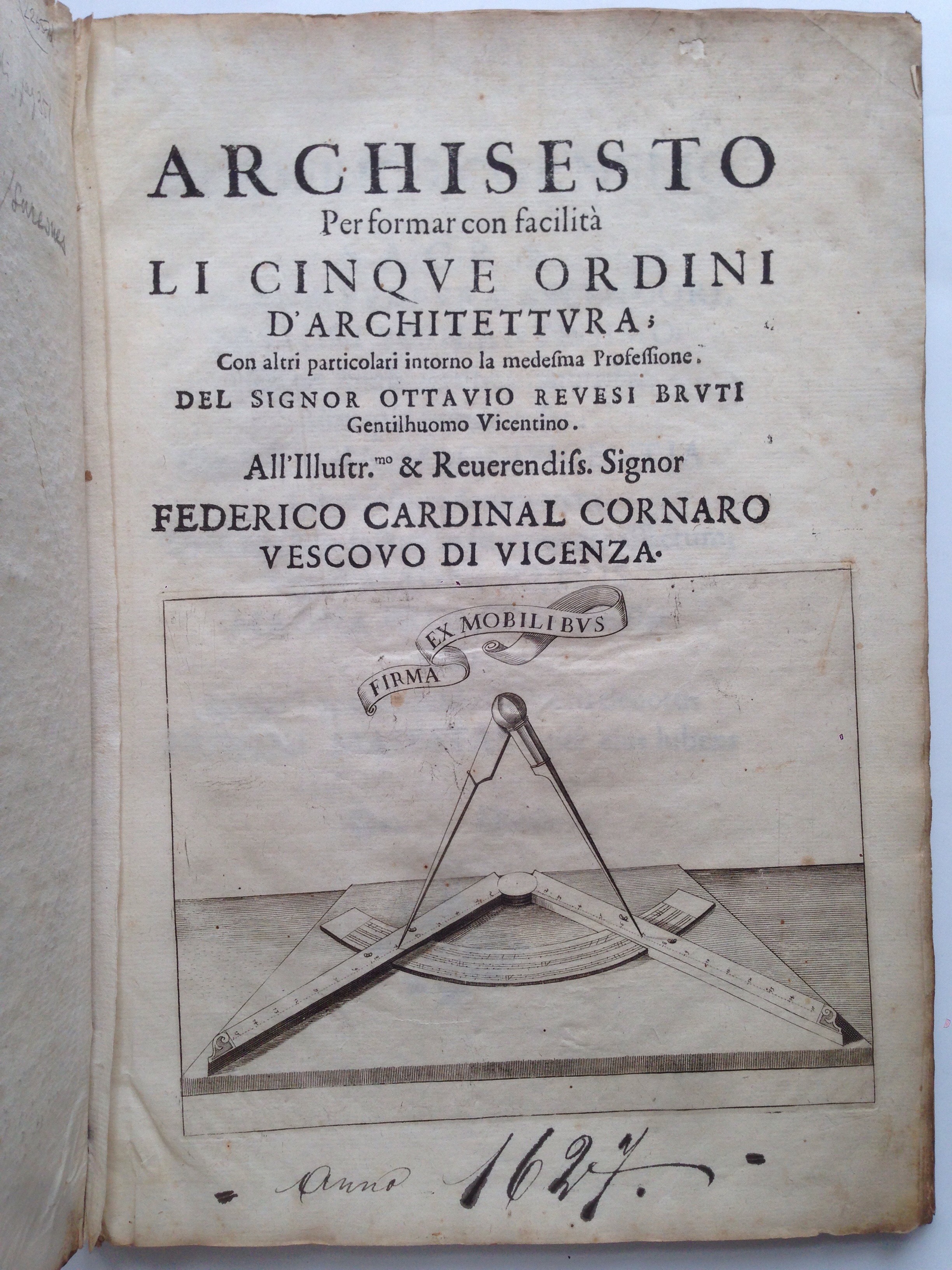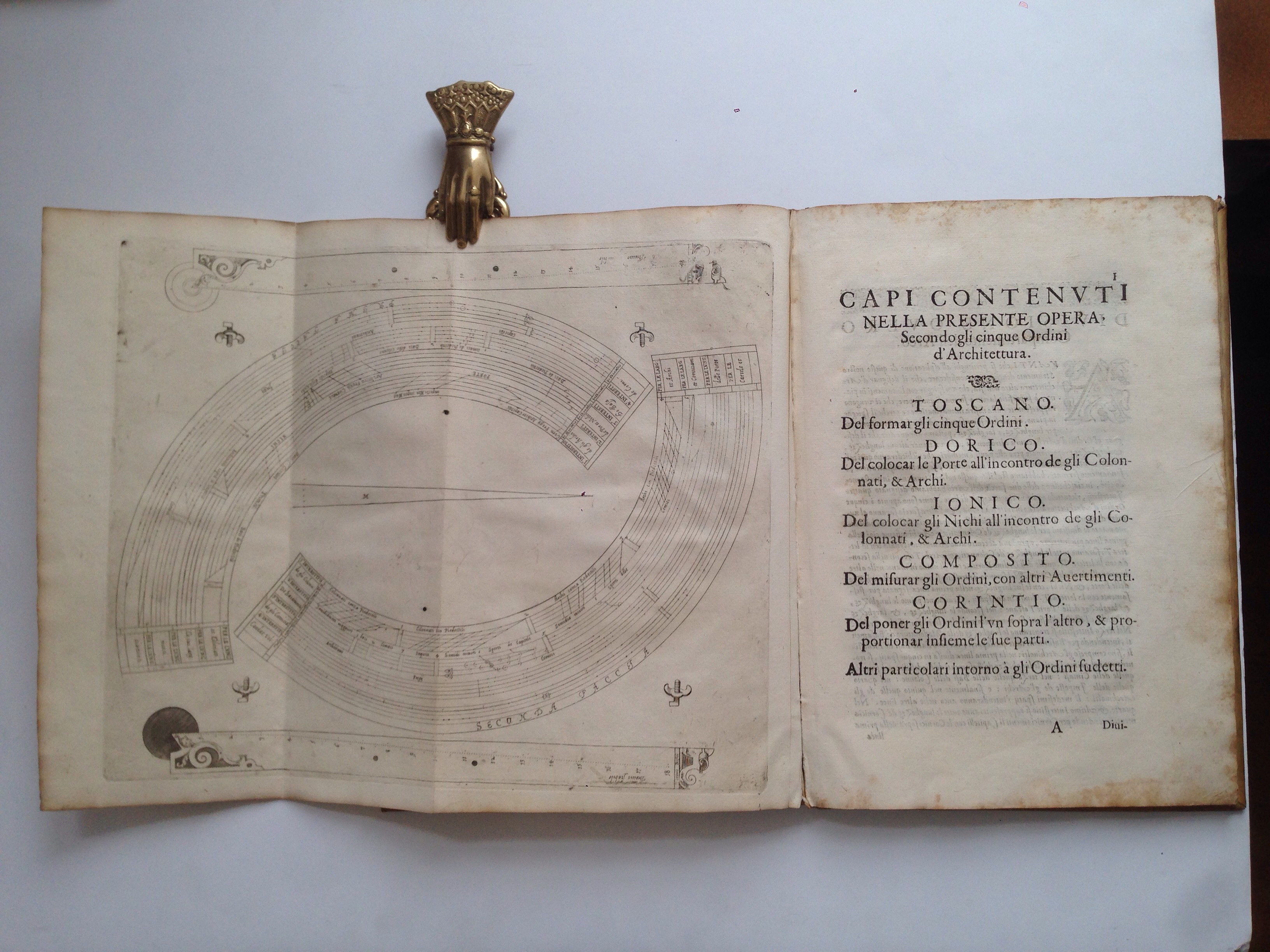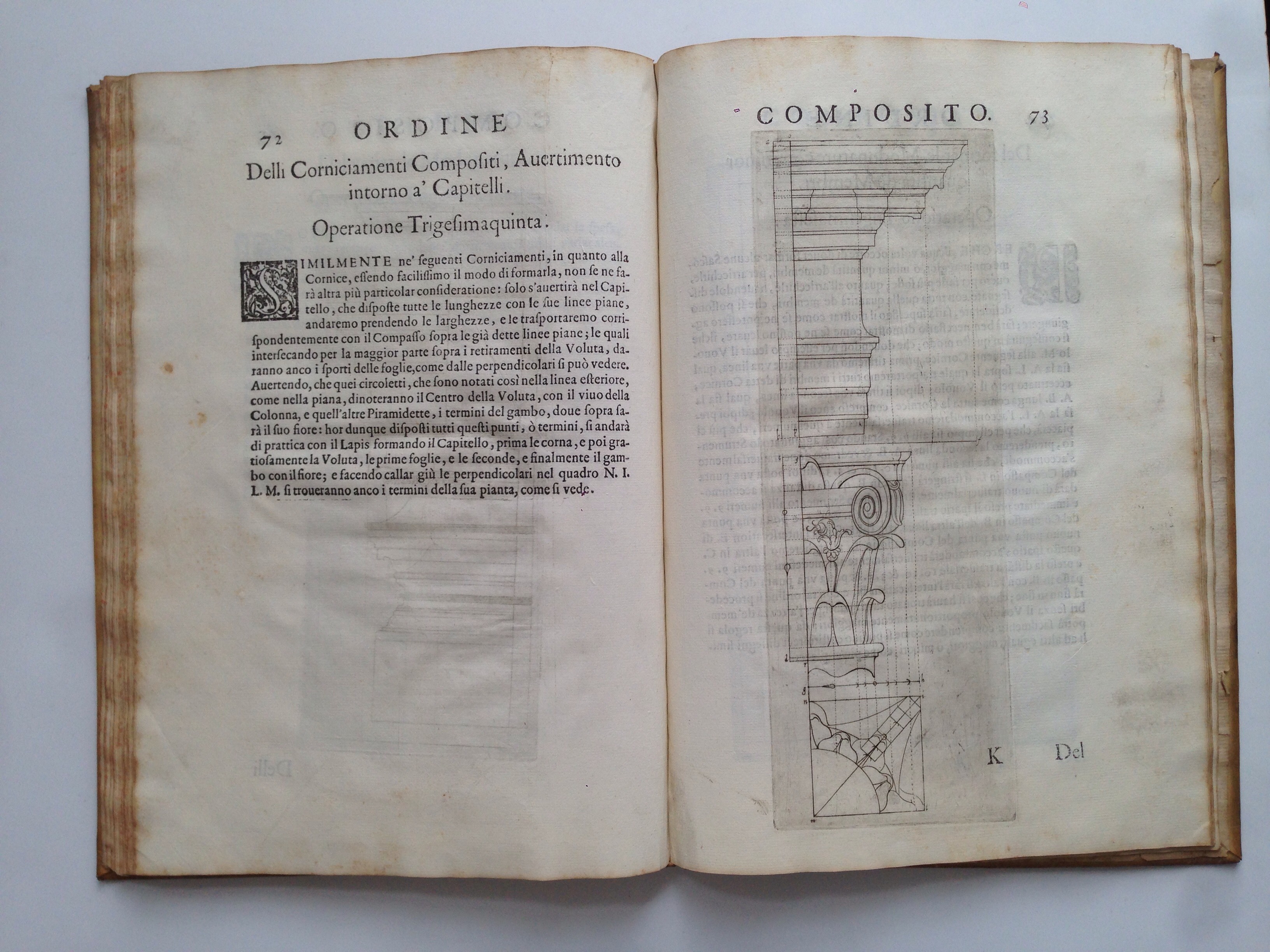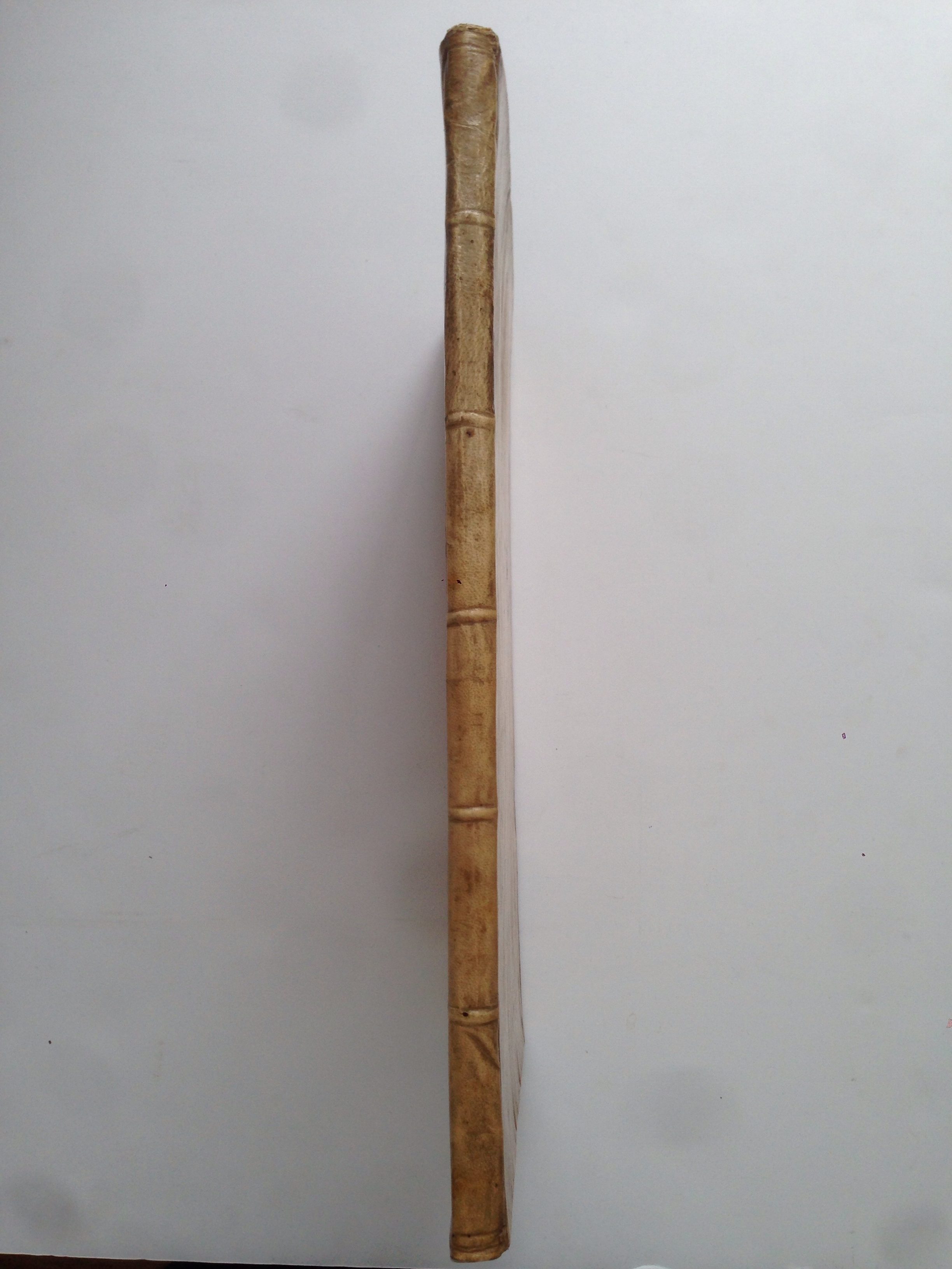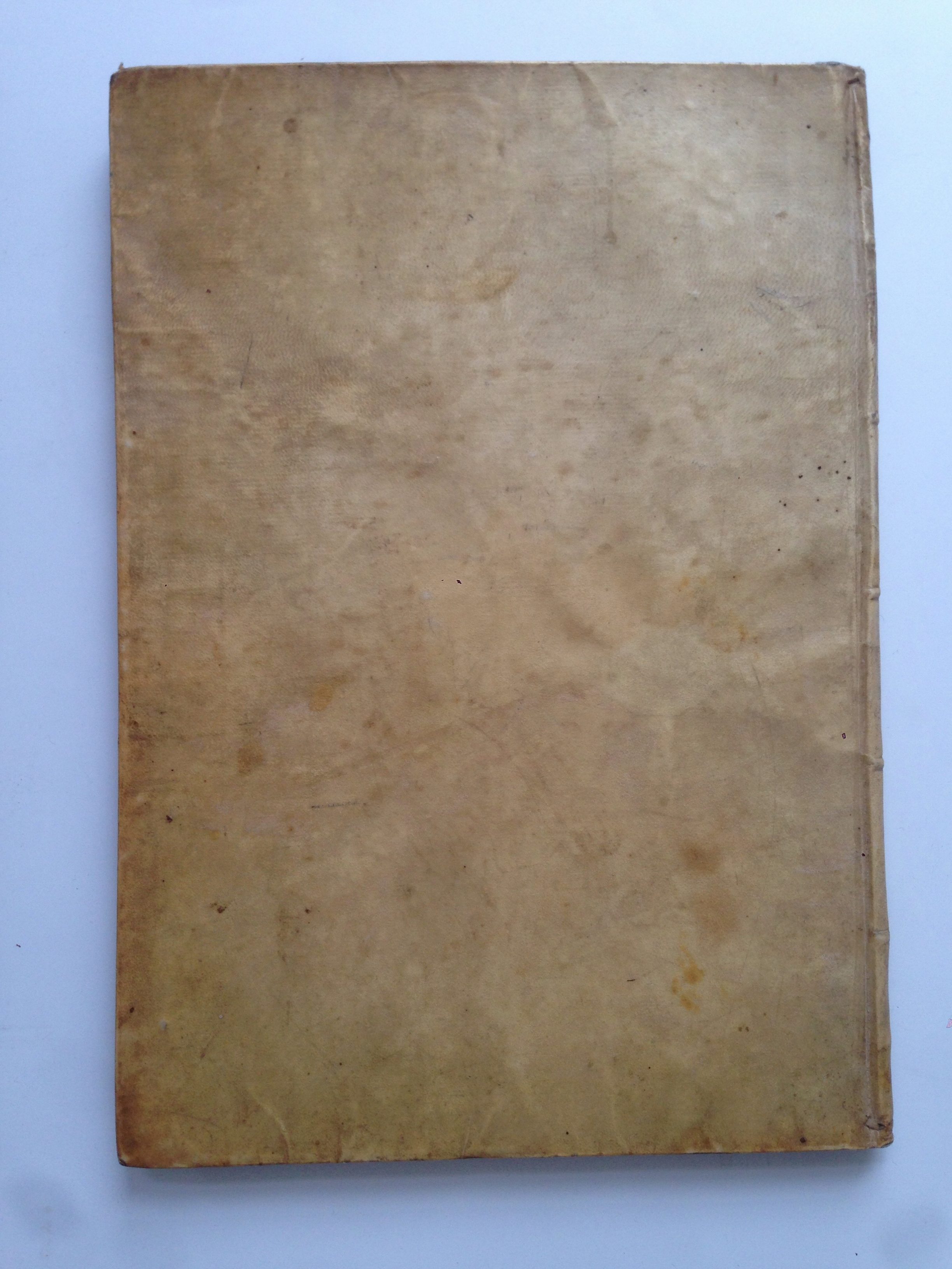REVESE BRUTO, Ottavio
Archisesto per formar con facilità li cinque ordini d\\\'architettura
Vicenza, appresso gli Heredi di Dominico Amadio, 1627£10,500.00
FIRST EDITION. Folio, pp. (viii), [2], 100, [2]. A4 A-M4 N2. Italic and Roman letter. Elegant title page with half-page engraving of an architectonic sector (archisesto) and pair of compasses headed by the motto ‘FIRMA EX MOBILIBUS’ in cartouche. Floriated woodcut initials, head and tail pieces, and typographical ornaments. Large folding plate after prefatory material showing in detail the components of the architectonic sector; engraving of baluster on final plate. Richly illustrated with fifty fine architectural engravings for practical use. Pencil autograph of Emilio Barcovich from the city of Fiume (now in Croatia and known as Rijeka) and handwritten record of provenance (Coll. Ing. Robert Panicali – Parigi/Suresnes) on front pastedown, maybe by the noted collector Giancarlo Beltrame. Date of publication in old hand at foot of t-p; early ms. on verso of rear endpaper: ‘liber perrarus’ (very rare book). A very good, clean copy, some mostly marginal spotting, title a bit dusty with small hole in blank at head, occasional ink spot or thumb mark. In contemporary vellum over boards.
First and only edition of Ottavio Revese Bruto’s (Brendola 1585-1648) architectural textbook, which shows how to make and use an ‘archisesto’. The ‘archisesto’ is a proportional compass invented by the author, who based his invention on Galileo Galilei’s geometrical and military compass, the sector. The name ‘archisesto’ comes from the words ‘archi[tettura]’ and ‘sesto’ (compass). This work is a ‘do-it-yourself’ aid for architects; the tool became quite popular between C17th and C18th, especially in Britain, where it was known as the architectonic sector. A nobleman from the area of Vicenza, Revese Bruto was educated at the prestigious Accademia Olimpica, where he had the opportunity to study the legacy of some of the greatest Italian architects of the Renaissance, such as Andrea Palladio, Sebastiano Serlio, and Vincenzo Scamozzi. To mention but one, the triumphal arch of Campo Marzo (destroyed in 1938) was among his most important achievements, and his 1620’s fine engraving of the stage of the Teatro Olimpico became soon a widespread and well-known illustration of the most celebrated theatre of Vicenza. His interests spanned from theatrical art to the technique of perspective. He is given as the author of treatises on these subjects, even though Archisesto appears to be his only published work. As the title has it, the architectonic sector’s aim is to facilitate the mathematics behind the design of the five orders of architecture: the Tuscan, Doric, Ionic, Composite, and the Corinthian.
The book is divided in five sections which focus on these styles, and it is strongly informed by earlier paramount works on Classical architecture and proportion (above all, Vignola 1562; Palladio 1570). Revese Bruto illustrates how to design arches, architraves, columns, pedestals, capitals and balustrades according to the canons of each one of the five orders. His addressee is Federico Cornaro, Bishop of Vicenza, who is praised in verse at the beginning. It is known that Cornaro commissioned the re-styling of the façade of the Vicenza bishop’s palace to Revese Bruto in the same period in which Archisesto was published. The five sections are preceded by the advice to the reader. Instructions on how to make an architectonic sector follow, together with the folding plate that illustrates its components. In the advice, the author states that the design of ornaments has always been the most delightful part of his profession. However, he knows the decoration of buildings is no easy task, since the attainment of right proportions often requires complex calculations. His architectonic sector offers a shortcut in this respect, making the burden of mathematics lighter. Revese Bruto’s only regret, he confesses, is not to have succeeded in showing how to divide the lines of the arch.
In addition to the practitioners of architecture, the author makes clear that anybody dealing with geometry, arithmetic, and music, will benefit from the use of this multifunctional object. Not only will his ‘scherzo matematico’ (mathematical joke) help one to design archways and divide the lines of the arcade, but also it will allow the architect to plan ‘temples, theatres, amphitheatres, circles, towers, pyramids, colossai, mausoleums, and so on.’ Most interestingly, Revese Bruto instructs the reader on how to build an architectonic sector. By cutting the components out of the large folding plate, and gluing them on either card board or plywood, one can start to assemble a model of the tool, which however is way longer and more complicated a process. Revese Bruto explains it in detail, advising on materials to use, such as German brass foil, without neglecting the entrepreneurial aspect of his invention. He leaves the reader suggesting the purchase of a good metal architectonic sector in Padua’s Piazza della Signoria at the shop premises of the craftsman Aquilin Serena Giovine.
BM STC IT. C17th., pp. 742-743; Graesse, VI, p. 97; Riccardi, p. 351. Not in Fowler.In stock



